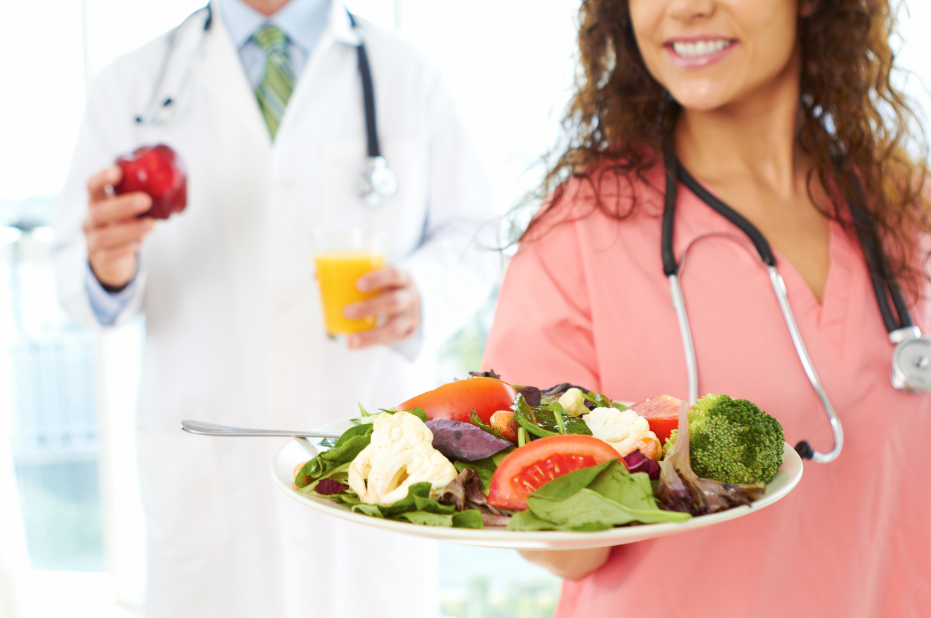Chronic health conditions pose a significant public health concern in the United States. According to the CDC, 6 out of every 10 American adult battles at least one chronic condition such as diabetes, cardiovascular disease, or obesity. Often, such chronic health conditions are at least partially caused by diet and other environmental factors. At the same time, about 10% of households in the United States experience food insecurity according to the USDA. Eating a diet rich in fresh fruits and vegetables is known to bring a wide variety of health benefits, including lower risk of obesity and cardiovascular disease. There is a growing movement called “Food as Medicine” that aims to help improve nutrition to prevent and treat chronic conditions.
BrightSide Produce has become involved in the “Food as Medicine” movement by partnering with federally qualified health centers (FQHCs) in Produce Rx programs. Here’s how it works: our clinic partners identify patients with chronic conditions that have a difficult time accessing affordable fresh food. These patients get referred to BrightSide, and we deliver bundles of fresh fruits and vegetables straight to the patient’s doorstep for a certain number of weeks. We currently work with four clinics in Minneapolis: the Native American Community Clinic, Southside Community Health Services, the Peoples’ Center, and the Indian Health Board. The City of Minneapolis Health Department helped facilitate some of these partnerships through a CDC REACH grant aimed at reducing health disparities in racial and ethnic populations with the highest rates of chronic diet-related condition.
Earlier this summer, Justa and Adam were able to attend the Food as Medicine Summit in Chicago, thanks to support from the City of Minneapolis Health Department. It was a great opportunity to learn about the diverse ways that organizations across the US are approaching “Food as Medicine.” Organizations at the conference ranged from food corporations to regional health care systems to product manufacturers and service providers to government officials. There were two days of presentations and panel discussions where folks shared their experience with pilot programs, and products and services that can help the “Food as Medicine” movement.
A common way that pilot programs employed “Food as Medicine” was by creating medically tailored meals (either kits or ready-to-eat) and distributing them to patients for a certain time duration. These meals were crafted to meet the dietary needs of patients with chronic conditions who require specific diets. While such programs made it easy for the patient to eat exactly what was prescribed, there were a number of limitations. First, because the medically tailored meals are expensive to produce, it limited the number of people able to be served through such approaches. Another common drawback is that most patients live with other family members, and it was difficult to prepare and eat separate meals together. Many patients served by such programs also experience food insecurity, so the meals were often shared with others.
How to pay for “Food as Medicine” programs was also a major theme of the conference. Most programs presented were grant-funded or sponsored by corporations through their CSR initiatives. Right now, most insurance providers to not cover “Food as Medicine” treatments, though it seemed like there was a strong push for insurance providers to start covering these programs. Funding sounded like the biggest limitation to implementing Food as Medicine programs across the diverse organizations present.
At its core, “Food as Medicine” is a simple concept — eating fresh, healthy foods support whole body health. We believe that our approach of providing reliable access to fresh produce is the most cost-effective way to help “Food as Medicine” become widespread. Bringing produce directly to participants homes also helps overcome barriers to food access like transportation. Our Produce Rx model also provides clients with the agency to prepare food in a way that is culturally relevant. Overall, we believe simplified “Food as Medicine” distributions are a powerful way to both promote public health and improve food security.

